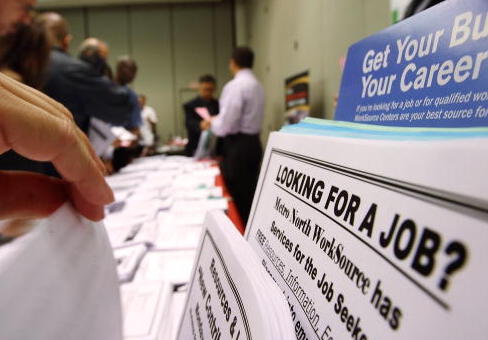The unemployment rate for all Americans declined from 4.2 percent in September to 4.1 percent in October, the lowest level in 17 years, according to the latest data from the Bureau of Labor Statistics. The number of unemployed individuals dropped from 6,801,000 to 6,520,000 in October.
The unemployment rate measures the percent of those who did not have a job and actively looked for one over the month.
The "real" unemployment rate, otherwise known as the U-6 measure, declined from 8.3 percent in September to 7.9 percent in October.
While the number of unemployed declined over the month, there were more people that did not enter the labor force or dropped out of the labor force in October.
The civilian labor force declined by 765,000 individuals over the month and there were 968,000 more Americans who were not in the labor force. Those not in the labor force increased from 94,417,000 to 95,385,000 from September to October. The bureau counts those not in the labor force as people who do not have a job and did not actively seek one in the past four weeks.
The labor force participation rate, which is the percentage of the population that has a job or actively looked for one in the past month, declined from 63.1 percent in September to 62.7 percent in October.
The number of employed Americans also declined from 154,345,000 in September to 153,861,000 in October, a decline of 484,000 individuals.
Fewer Americans were working part-time for economic reasons this past month. There were 5,122,000 Americans working part-time in October who would rather have a full-time job but cited economic reasons for not having such employment. This number declined by 369,000 over the month.
According to the bureau, involuntary part-time workers are "persons who indicated that they would like to work full time but were working part time (1 to 34 hours) because of an economic reason, such as their hours were cut back or they were unable to find full-time jobs."
"October's report shows a strong jobs month buoyed by the increase in demand for workers to deal with the hurricane damage," said National Federation of Independent Business chief economist Bill Dunkelberg.
"Owners are raising compensation at rates not seen since 2000, when a record 64.7 percent of the adult population had a job compared to around 60.0 percent today," said Dunkelberg. "Small business owners are seeking to hire workers to meet the demand, but the skills gap continues to grow, especially in construction and manufacturing industries."
